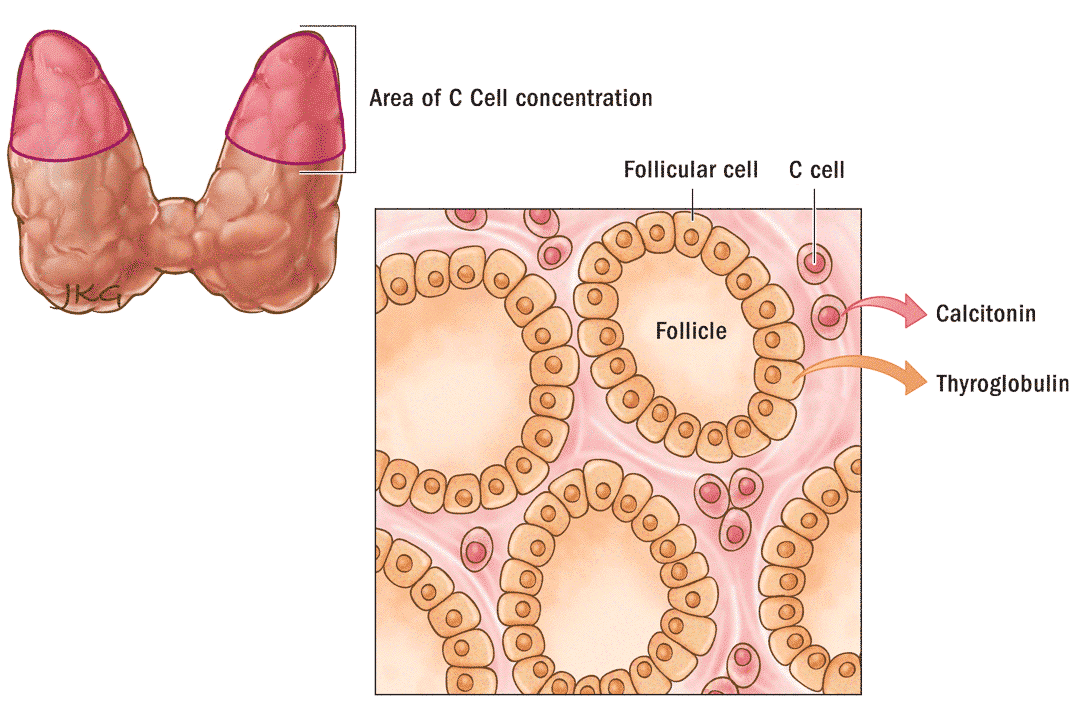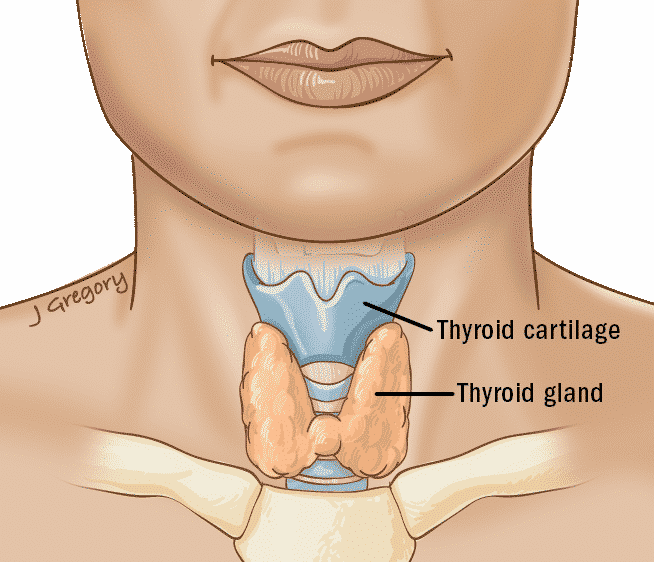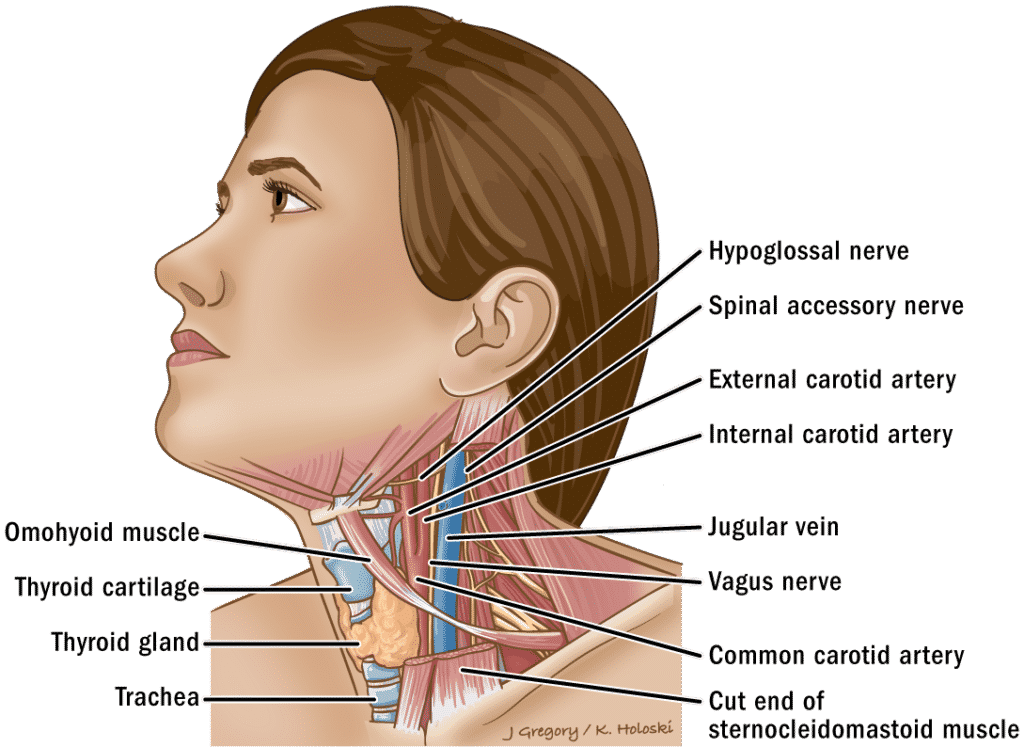When discussing thyroid cancer, it’s important to first understand the anatomy of the thyroid gland and the important surrounding structures. The thyroid gland sits in the midline of the neck, just beneath the skin and a few layers of thin muscles. It has 2 lobes, the right and left lobe, which are connected in the midline by an isthmus. Occasionally, the thyroid also has a prominent pyramidal lobe that extends upwards towards the hyoid bone and base of tongue.
The thyroid gland secretes thyroid hormone, which is important in regulating many metabolic functions of the body. Thyroid hormone levels are closely controlled by the body, but can sometimes be over or under produced. A simple blood test can measure these hormone levels. Cases of overproduction create hyperthyroidism, and cases of underproduction create hypothyroidism.

The gland is made up of follicular cells that take up iodine and produce thyroid hormone, which is stored in follicles inside the thyroid. The thyroid is also made up of another type of cell called parafollicular cells (C-cells). These cells form a hormone called calcitonin, which helps with calcium regulation. Cancer of the C-cells is called medullary thyroid carcinoma and will be discussed in a different section.

The blood supply to the thyroid gland comes from the inferior thyroid artery, a branch of the thyrocervical trunk, and the superior thyroid artery, a branch of the external carotid artery. In some rare cases, there exists an artery called the ima artery, which runs from below the clavicles on the top surface of the trachea towards the thyroid gland.
On the backside of the thyroid gland are four parathyroid glands (two on each side). These are, much like the thyroid gland, endocrine glands that produce and secrete hormones. Through secretion of parathyroid hormone, the parathyroid glands regulate calcium levels in the blood and bones. Additionally, parathyroid hormone controls levels of calcium absorption from the diet and calcium excretion from the kidneys into the urine. During thyroid surgery, it’s important for surgeons to carefully separate the parathyroids from the thyroid in order to maintain normal levels of parathyroid hormone in the blood.

The recurrent laryngeal nerves (one on each side) run upward from the vagus nerve toward the voice box (larynx) in the groove between the trachea (windpipe) and esophagus which is just deep to the thyroid gland. This nerve moves the vocal cords and is responsible for speaking and control of the vocal cords during breathing. In extremely rare cases, the right recurrent laryngeal nerve can emerge straight down from the vagus nerve. This is called a non-recurrent laryngeal nerve because it does not come from below. It is important for surgeons to locate and protect this nerve during surgery.
The superior laryngeal nerves (one on each side) run downward from the vagus nerve. The external branch supplies the cricothyroid muscle and helps with changing voice pitch and volume, whereas the internal branch controls the sensation of the larynx and aids in normal swallowing.
The main lymph nodes associated with the thyroid are the central compartment lymph nodes (levels VI and VII) which lie in the middle portion of the neck in the tissue surrounding the thyroid gland. Occasionally thyroid cancers can spread to the lateral neck or retropharyngeal lymph nodes (situated behind the upper part of the pharynx) as well.












